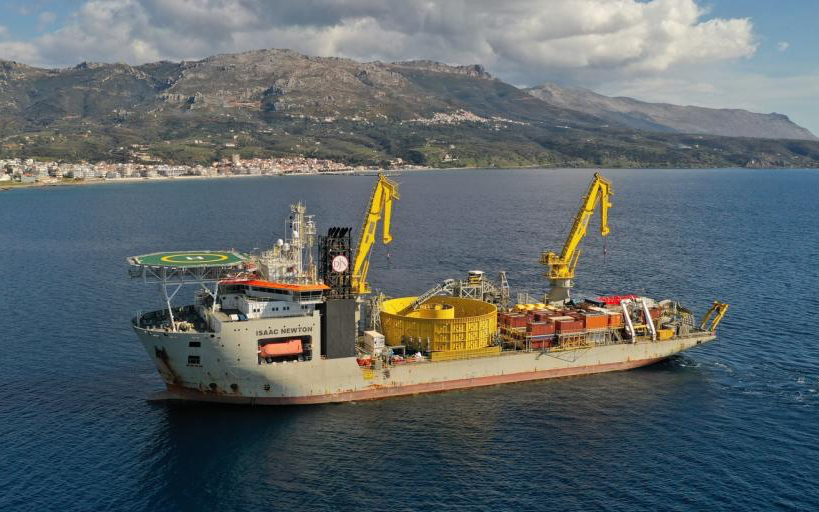For the very first time in history, the island of Crete has been connected to the Greek mainland by means of a subsea electricity link. Jan De Nul Group installed the 135-km long cable with its cable installation vessel Isaac Newton over a challenging seabed, at up to approximately one kilometre in depth.
The project was commissioned by grid operator ADMIE to Hellenic Cables, which produced the cable needed. In turn, the latter joined forces with Jan De Nul, which took care of the installation. Crete had been planning to connect to the Greek mainland, in order to achieve a more reliable, cheaper and environmentally friendly electricity supply.
The Crete-Peloponnese Interconnector is also known as the ‘Interconnection of Records’: two submarine AC cables of about 135 km each as well as 42 km of underground AC cables on land, connect Cretan Chania with Neapoli on the mainland.
Also read: Jan De Nul buys large cable layer from Ocean Yield
‘A challenging seabed with rough rocks, cable tensions of 75 tonnes, large water depths of up to 1 km and the installation of an unprecedented length of cable in very challenging adverse weather conditions: all thanks to the tireless efforts of our crew on board the Isaac Newton, we have bridged these 135 km. Together we successfully delivered the installation of one of the most challenging interconnectors in the world,’ says Tobias Boderé, Project Manager at Jan De Nul Group.
Rough seabed
Due to the proximity of the Hellenic Trench fault line, the seabed between Crete and the Greek mainland is very rough with steep cliffs. Jan De Nul installed several types of protective material to protect the cable, ensuring its stability and durability. The cable route was optimised and the different types of customised cable protection systems (CPS) were successfully installed.
Also read: Keel laid for Jan De Nul’s new floating offshore installation vessel








